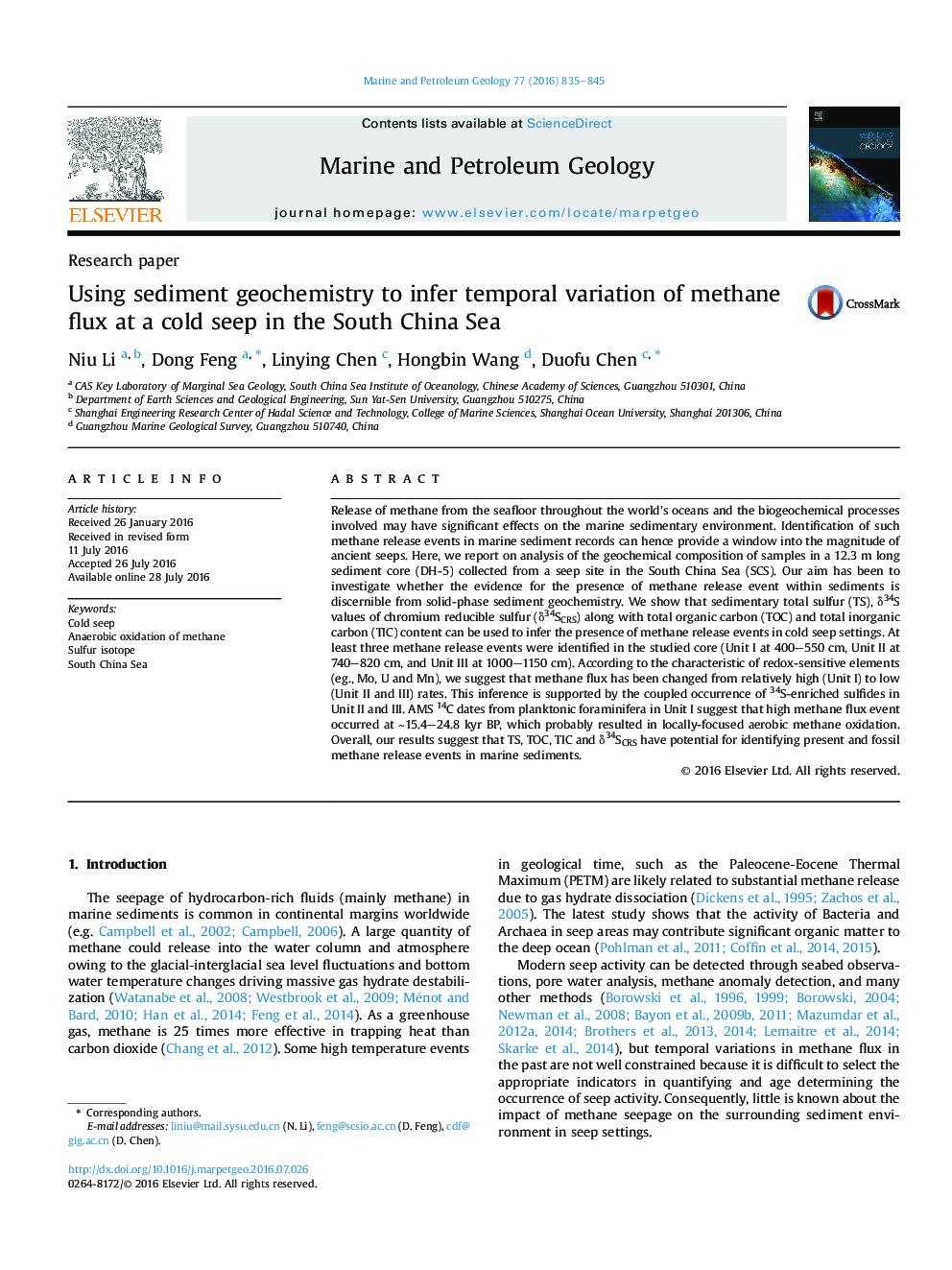| کد مقاله | کد نشریه | سال انتشار | مقاله انگلیسی | نسخه تمام متن |
|---|---|---|---|---|
| 6434626 | 1637150 | 2016 | 11 صفحه PDF | دانلود رایگان |
- Seep sediment TS, TOC, TIC and δ34S can be used to identify changes in methane flux.
- Anaerobic oxidation of methane caused Mo enrichment and positive δ34SCRS values.
- Aerobic oxidation of methane caused U enrichment and Mn depletion.
- Three methane release events were identified in gravity core from seep area.
Release of methane from the seafloor throughout the world's oceans and the biogeochemical processes involved may have significant effects on the marine sedimentary environment. Identification of such methane release events in marine sediment records can hence provide a window into the magnitude of ancient seeps. Here, we report on analysis of the geochemical composition of samples in a 12.3 m long sediment core (DH-5) collected from a seep site in the South China Sea (SCS). Our aim has been to investigate whether the evidence for the presence of methane release event within sediments is discernible from solid-phase sediment geochemistry. We show that sedimentary total sulfur (TS), δ34S values of chromium reducible sulfur (δ34SCRS) along with total organic carbon (TOC) and total inorganic carbon (TIC) content can be used to infer the presence of methane release events in cold seep settings. At least three methane release events were identified in the studied core (Unit I at 400-550 cm, Unit II at 740-820 cm, and Unit III at 1000-1150 cm). According to the characteristic of redox-sensitive elements (eg., Mo, U and Mn), we suggest that methane flux has been changed from relatively high (Unit I) to low (Unit II and III) rates. This inference is supported by the coupled occurrence of 34S-enriched sulfides in Unit II and III. AMS 14C dates from planktonic foraminifera in Unit I suggest that high methane flux event occurred at â¼15.4-24.8 kyr BP, which probably resulted in locally-focused aerobic methane oxidation. Overall, our results suggest that TS, TOC, TIC and δ34SCRS have potential for identifying present and fossil methane release events in marine sediments.
Journal: Marine and Petroleum Geology - Volume 77, November 2016, Pages 835-845
